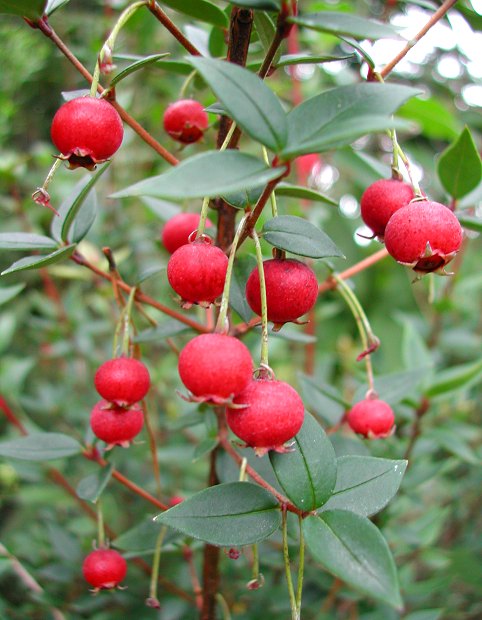First Real Frost!
 |
| Icy Silverbeet |
On Monday I awoke to find the yard carpeted in a shimmer of white, as the first real frost of the season hit. Well, that is to say, the first frost I was up early enough to witness! It was cold enough that as I went to water the garden I spent 5 minutes trying to find the kink in the hose before realising that the hose had frozen solid somewhere.
It was also cold enough to partially defoliate my fig tree that is planted in the ground, although my figs in pots were spared, being up off the ground.
 |
| This fig tree hadn't lost any leaves until Monday |
Tree Removal
Although currently hit by a nasty flu, I woke up Sunday feeling inspired enough to tackle the Privet trees in my backyard (which I previously had thought were camphor Laurels!). Privets (and Laurels) are a noxious weed in many parts of Australia due to their ability to spread extremely easily via birds, who eat the small berries they produce, and by their vigorous growth, which forms thickets and out-competes native and other plants for sunlight.
 |
| Privet Thicket |
 |
| Privet Leaves and Berries |
Each Privet berry contains two small seeds which germinate readily in exposed or disturbed soil. Privet can also regrow via suckers along their roots, so I hope I removed enough so that I don't have another wave of plants come up!
The thicket in my backyard was actually a clump of about 20 trees. A mature privet, according to an Australian Government website, has the ability to produce up to a million seeds per year, and the berries support unnaturally high populations of Currawongs which then displace other native birds.
The invasiveness of the tree can easily be seen after I chopped off their heads, and it became evident how many trees were growing in the thicket. I have since dug them all up, and planted a brand new persimmon tree in their place.
In Canberra the ACT Government sponsors a weed exchange, where you bring in certain varieties of woody invasive weeds, and they exchange them for a native plant. Privet meets these requirements, although I think I have missed the swap, which usually occurs twice a year in early Autumn and Spring. HERE is a link for those in the ACT with privet trees in their backyard, and who would like some extra encouragement to chop them down!
 |
| There Were 21 Individual Trees Here! |
Cauliflower Harvest
On Sunday I harvested my first cauliflower. It was a nice size and weighed in at just over 800g. If growing without insecticides, as I am, it is a good idea to soak your newly picked cauliflower in salt and water, as it will drive out any caterpillars that may have taken up residence!
 |
| Cauliflower With Beer for Reference |
I immediately cooked it up into a delicious Indian curry, which is very tasty and great for those who like curry, but are scared of spicy food. It is very easy to make, and I encourage everyone to try it!
Mild Cauliflower Curry in a Coconut Sauce
Ingredients:
2 tbs oil
1 cauliflower
1 onion
2 tomatoes
2 tsp garlic
1 tsp salt
1 tsp sugar
2 tsp cumin seeds
1-3 chillies (optional)
1 teaspoon tumeric powder
1.5 teaspoon tamarind paste
3/4 cup of warm water
400ml coconut milk
Method
1. Cut the cauliflower into small florets, rinse, and set aside. Dice the tomato into medium to small chunks and set aside. Add 1.5 tsp tamarind paste to the warm water, mix well and set aside.
2. Chop the onion and chillies (if using) and put in a food processor with the garlic and tumeric and blend to a paste.
3. Heat the oil in a wok or pot and add the cumin seeds until they start to splutter. Add the spice mix from the processor and cook on medium for 5 minutes, making sure it doesn't burn.
4. Add the cauliflower florets, and stir to coat with the spice mixture in the pan, and cook for a further 5-10 minutes stirring constantly.
5. Stir in the coconut milk, salt and sugar and cook for 10 minutes before adding the tamarind water mixture. Do not let it boil or the coconut milk might separate. If the mixture is too watery, simmer gently until it reaches your preferred consistency. Finally add the chopped tomato, allow to heat through for 5 more minutes before serving!



































